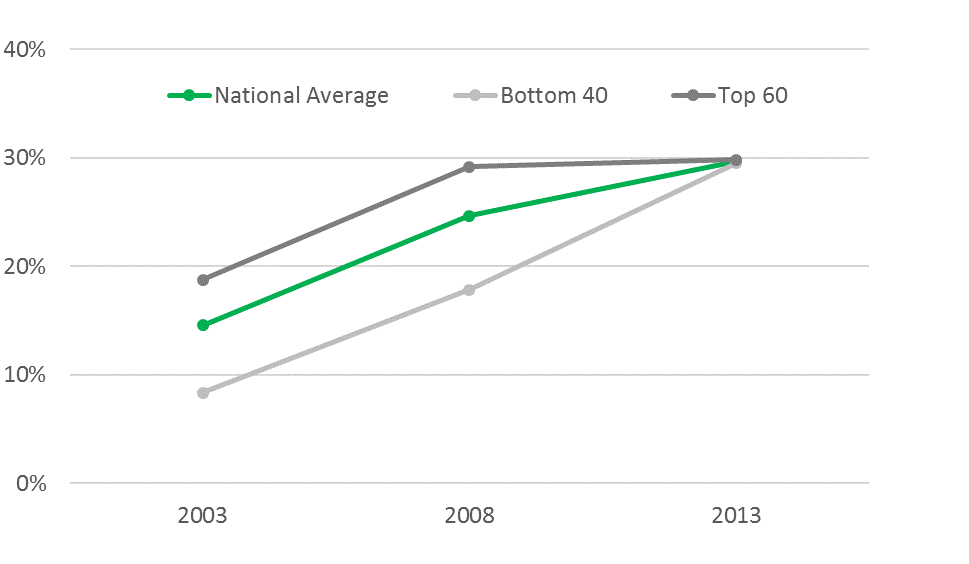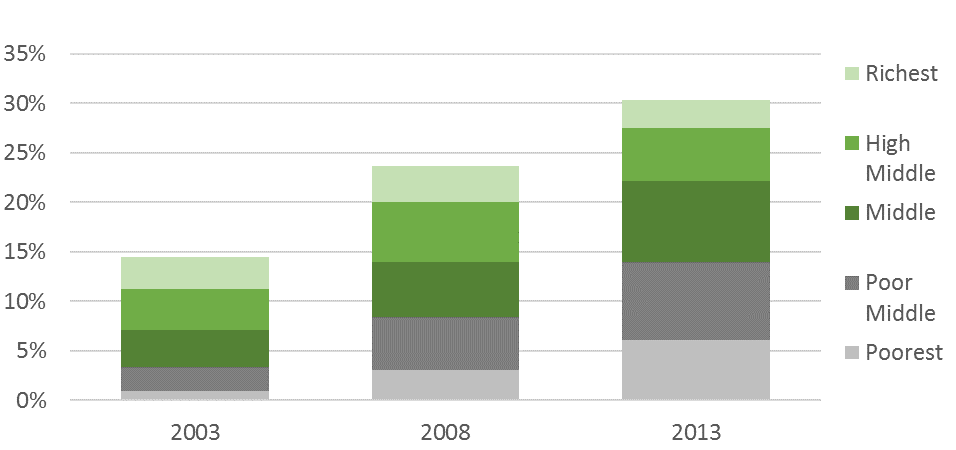Build Effective Social and Behavior Change Strategies


Nigeria has been in the press lately as a poster child for inequality as the income gap between the wealthy and the poor is, by some measures, widening. The World Bank estimates that 86 million Nigerians, almost half the population, live in extreme poverty.
Another way to think about inequality is to look at differences in asset ownership: do the poor possess assets that are associated with middle and upper-class standards of living?
We compared a decade’s worth of asset ownership data from household surveys and discovered an unexpected finding: ownership of scooters and motorcycles across different socioeconomic classes have converged.

This is interesting because scooters and motorcycles, which provide transportation and often a small income, are assets typically acquired by households moving into the lower rungs of the middle class. Nationally, roughly 30 percent of Nigerian households owned at least one scooter by 2013. Surprisingly, given the poverty data, this 30 percent rate holds for both the bottom 40 percent and the top 60 percent.
Figure 1: Scooter Convergence in Nigeria

Figure 2: Scooter ownership by socioeconomic wealth quintile

There also appears to be stark regional variation, but not necessarily in the way that might be expected. While the megalopolis of Lagos dominates nearly all national economic statistics, scooter and motorcycle ownership in the commercial capital is just 6 percent. The national capital Abuja is also at 6 percent. Yet ownership rates in smaller northern cities like Sokoto, Gombe, and Kano are around 50 percent.
So, while a widening income gap in Africa’s largest economy deserves attention, the picture is more nuanced. Analysis at a more granular level – say, at the city level – usually tells a different story. Nigeria’s income distribution may be diverging. But ownership of assets like scooters and motorcycles are converging.